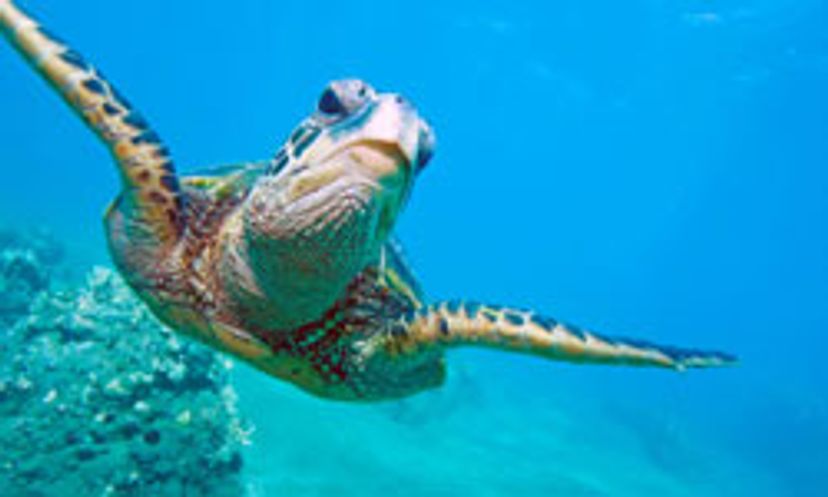
About This Quiz
Oceans cover most of the Earth's surface. They include a vast diversity of life, everything from plants to large mammals. Oceans represent a truly undiscovered world for most people. Take this quiz and learn more about ocean life.The "seven seas†take up 70 percent of the Earth's surface and include 97 percent of the world's water.
The Pacific ocean, which includes the North and South Pacific subdivisions, is the largest ocean. The Pacific ocean is 181 million square kilometers.
The Pacific ocean contains many volcanic vents, seamounts and deep trenches. The Pacific basin is a rocky floor.
Advertisement
Shallow water is driven by wind, whereas deep water is driven by gravity.
Ocean water moves in large circular patterns called gyres. The Gulf Stream, which moves from Florida to the North Atlantic Ocean, is an example of a gyre.
Thermohaline currents move from the surface of the water down to the ocean floor and back.
Advertisement
Polar water is more dense because molecules travel closer together and because of salt crystals in the water.
When plates on the ocean floor move apart, magma oozes out. This magma cools and hardens forming rocks, known as basalts, on the ocean floor.
A large part of the ocean floor is flat and made up of sediment. These areas are known as the abyssal plains.
Advertisement
Salt in water alters its freezing point. Deep ocean water can still remain liquid at -2 degree Celsius.
Sea life consists of plankton (floaters), nekton (swimmers) and benthos (creatures on the sea floor).
Phytoplankton are microscopic algae that engage in photosynthesis.
Advertisement
Zooplankton eat phytoplankton. Small worms, small jellyfish, clams and larvae are examples of zooplankton.
Lobsters, oysters, sea anemones, barnacles, snails and halibut are all examples of benthos. These creatures all live along the ocean floor.
The deep sea is the equivalent of a barren desert. Not much lives in the deep sea. Close to hydrothermal vents, however, you can find clams and worms.
Advertisement
Phytoplankton, which produces carbohydrates, is at the very bottom of the food chain. Phytoplankton is consumed by plankton.
Sponges just sit and wait at the bottom of the sea. They feed on dead-organisms and small food particles from fish higher above.
Researchers are investigating the cancer fighting properties of the ocean sponge and the sea-squirt.
Advertisement
The Japanese eat more than 20 different varieties of seaweed. American use seaweed in abundance as well. Seaweed compounds are added to beer, ice cream and salad dressing.